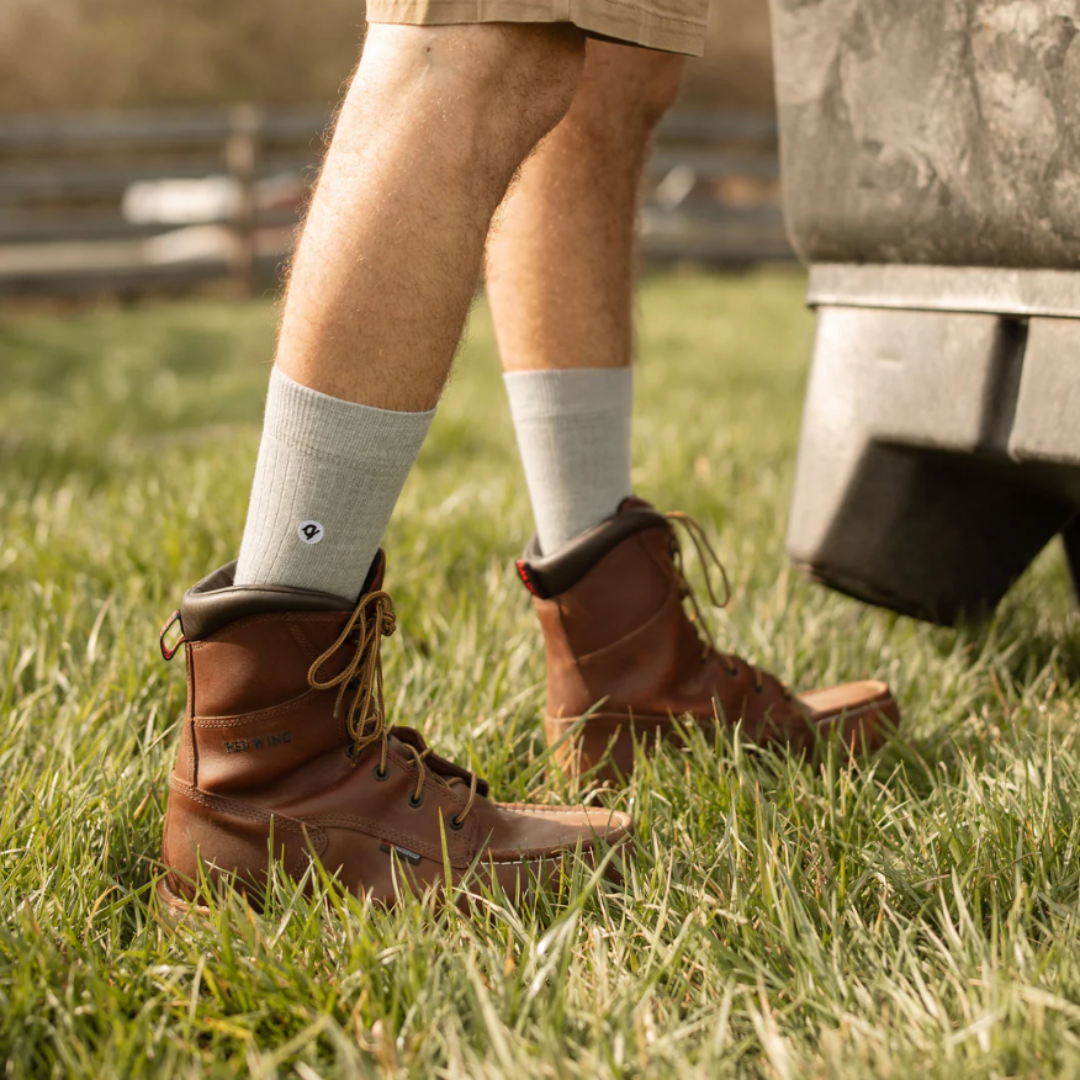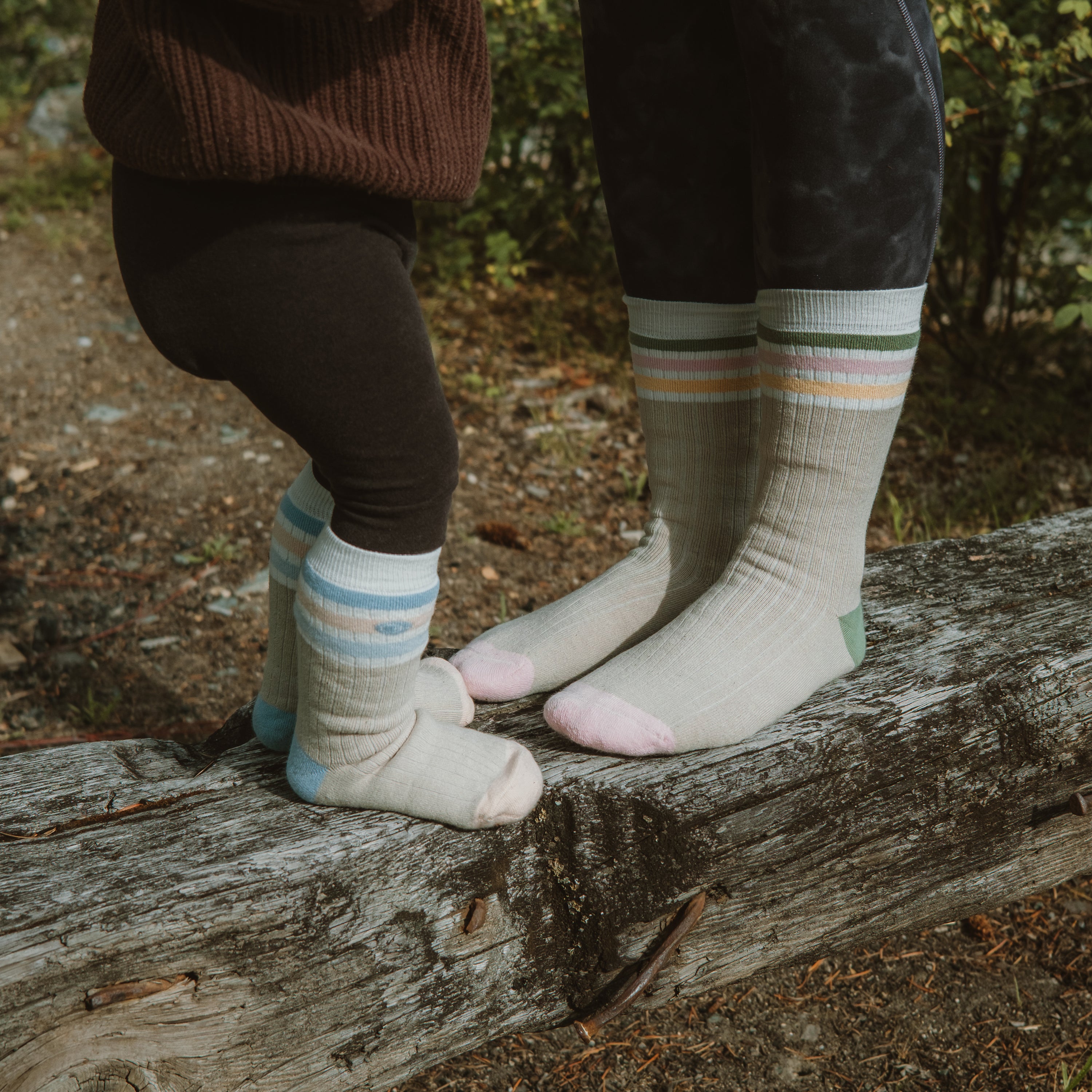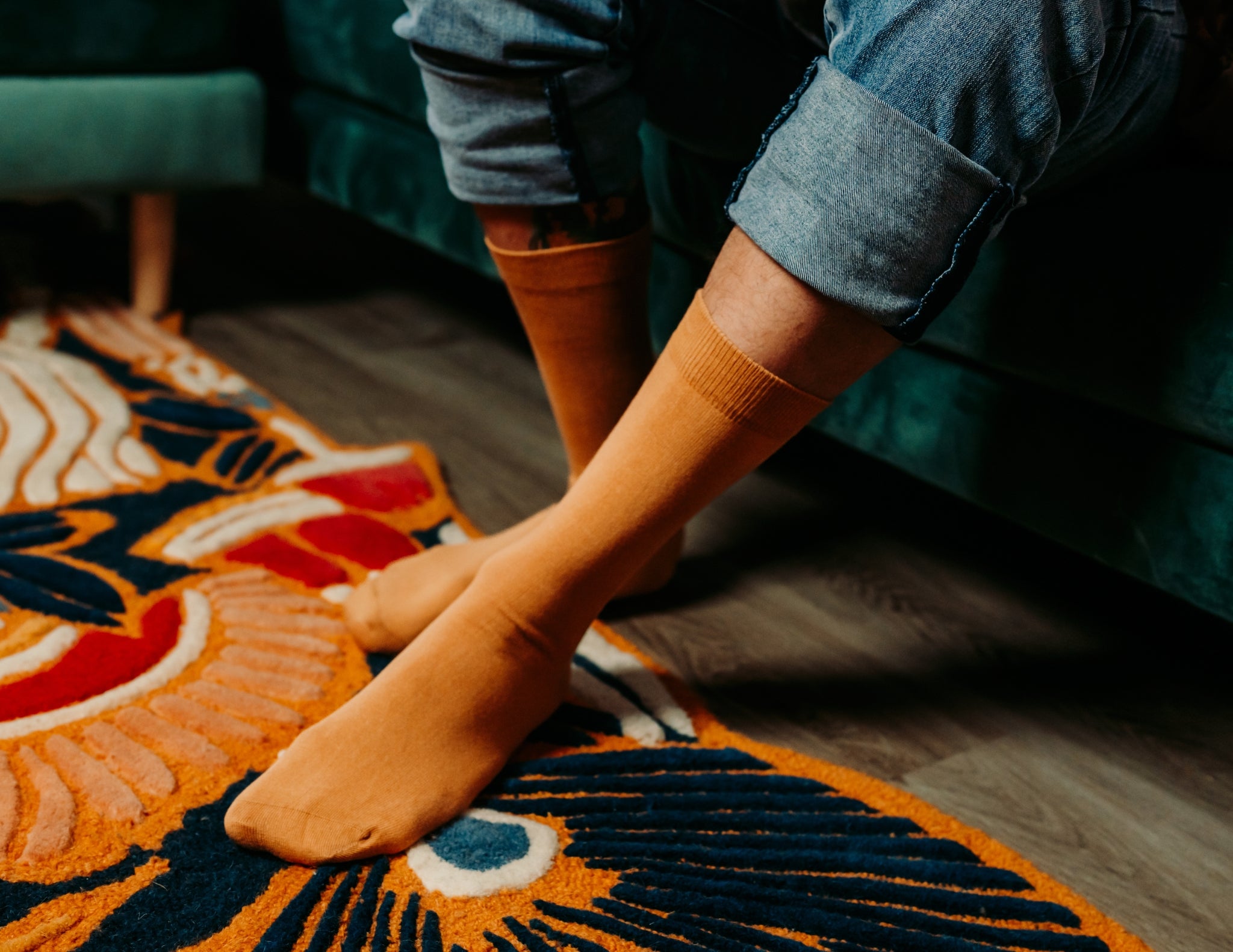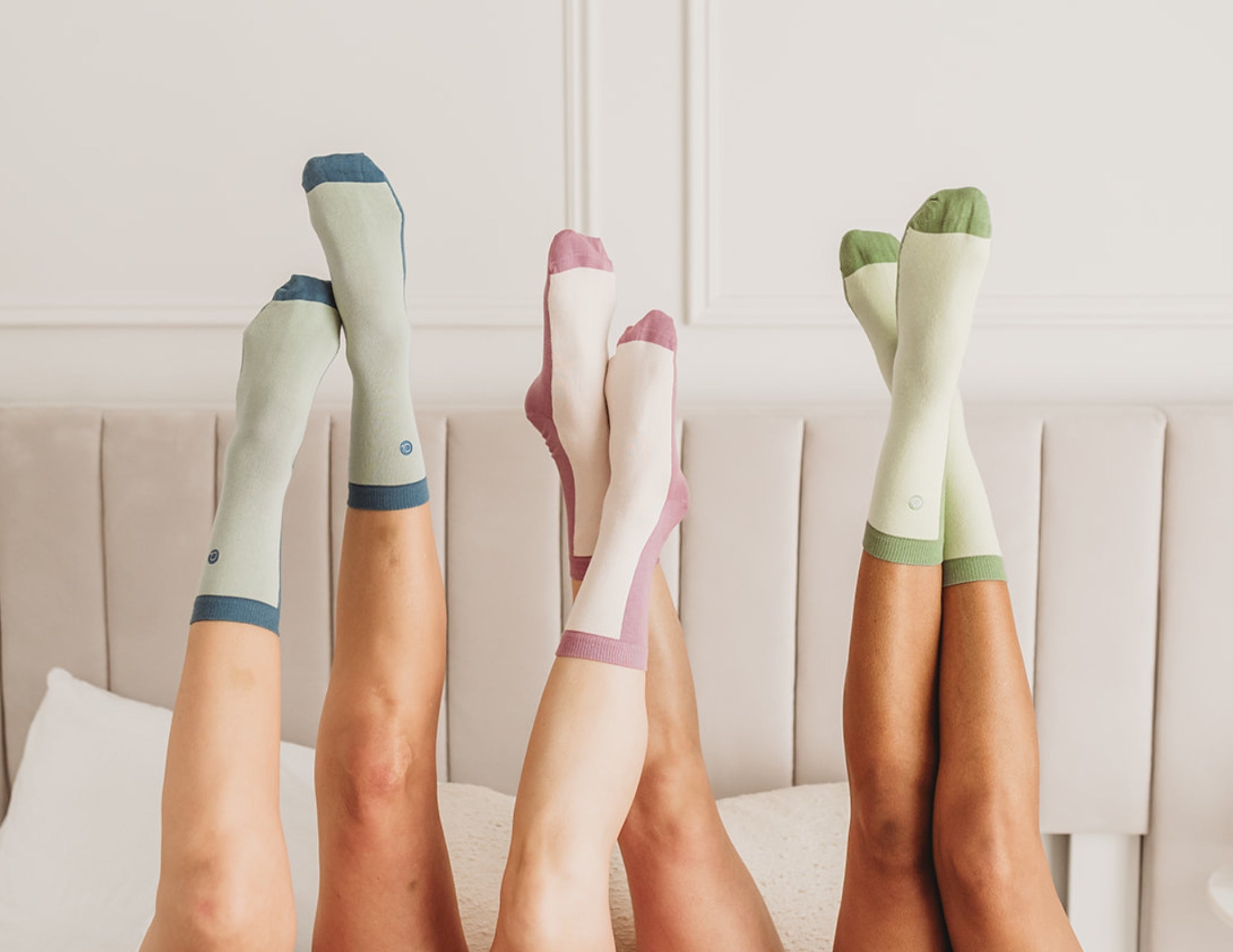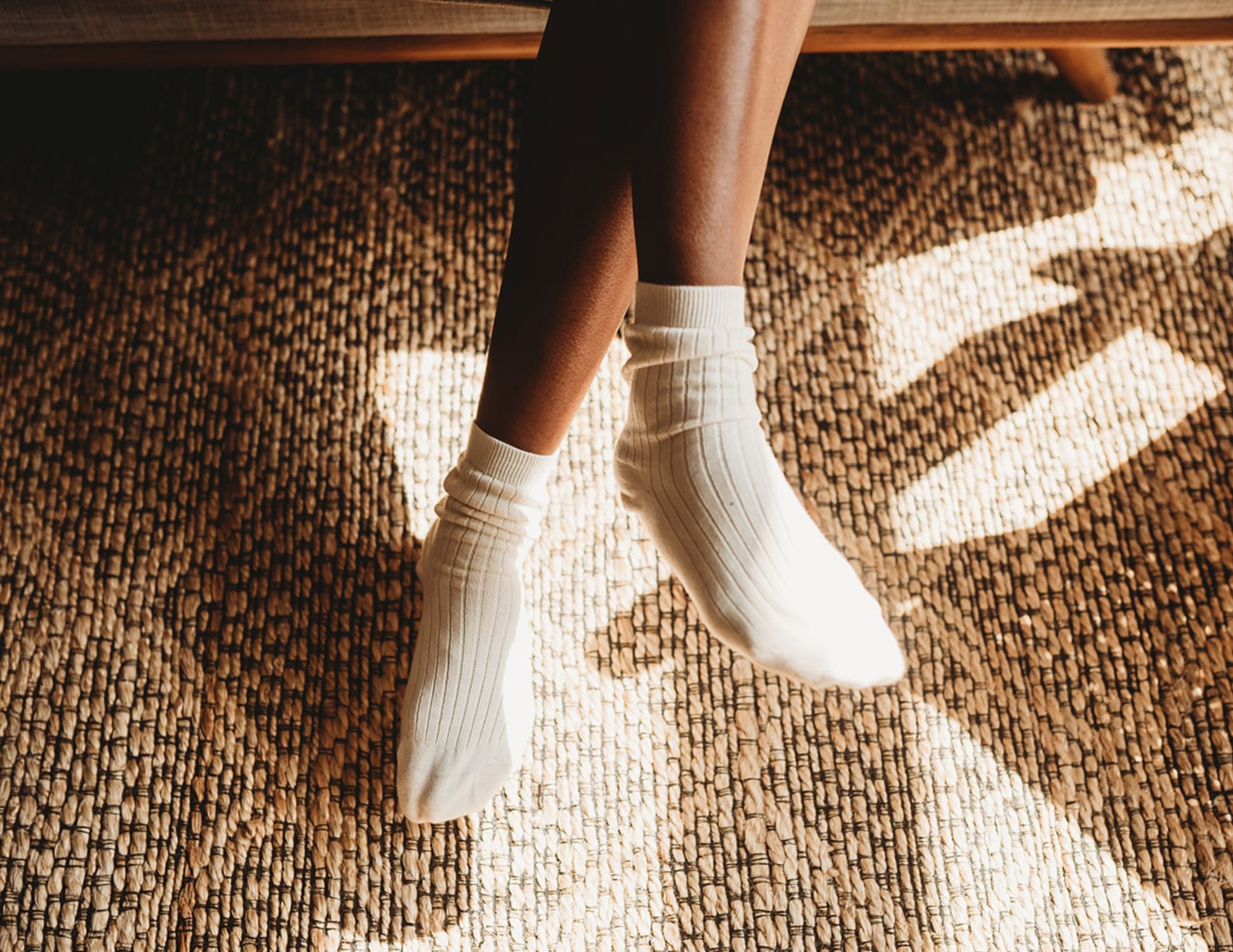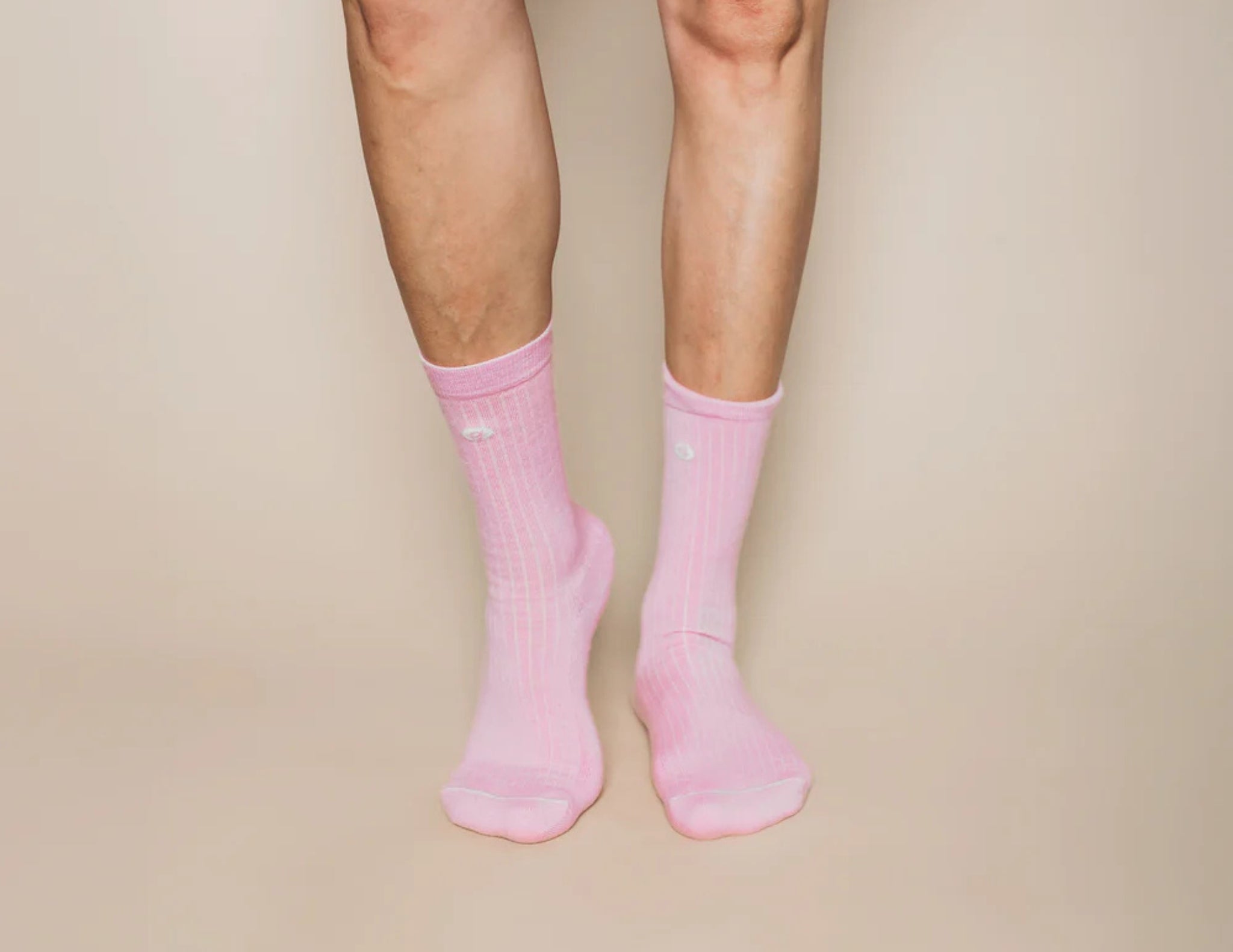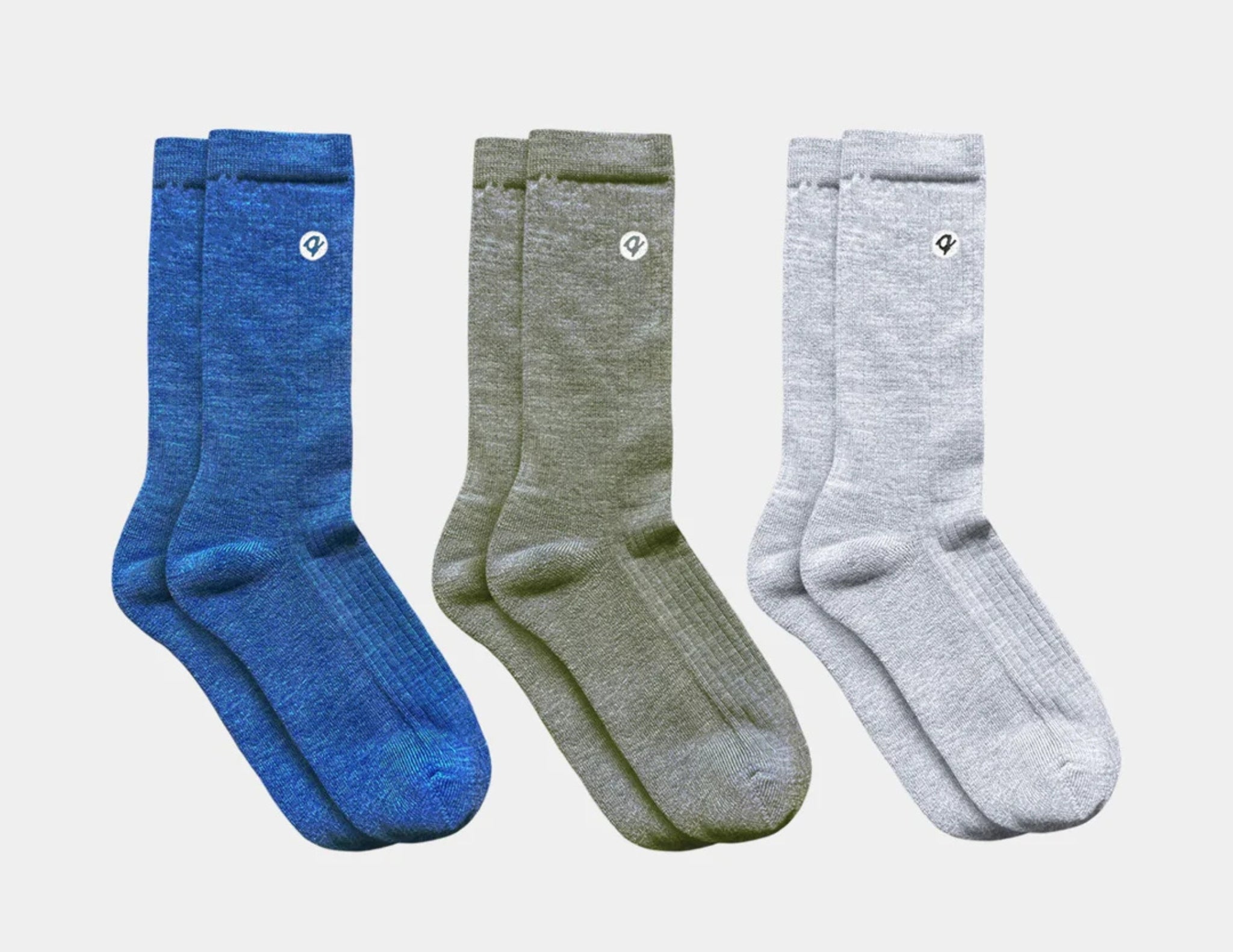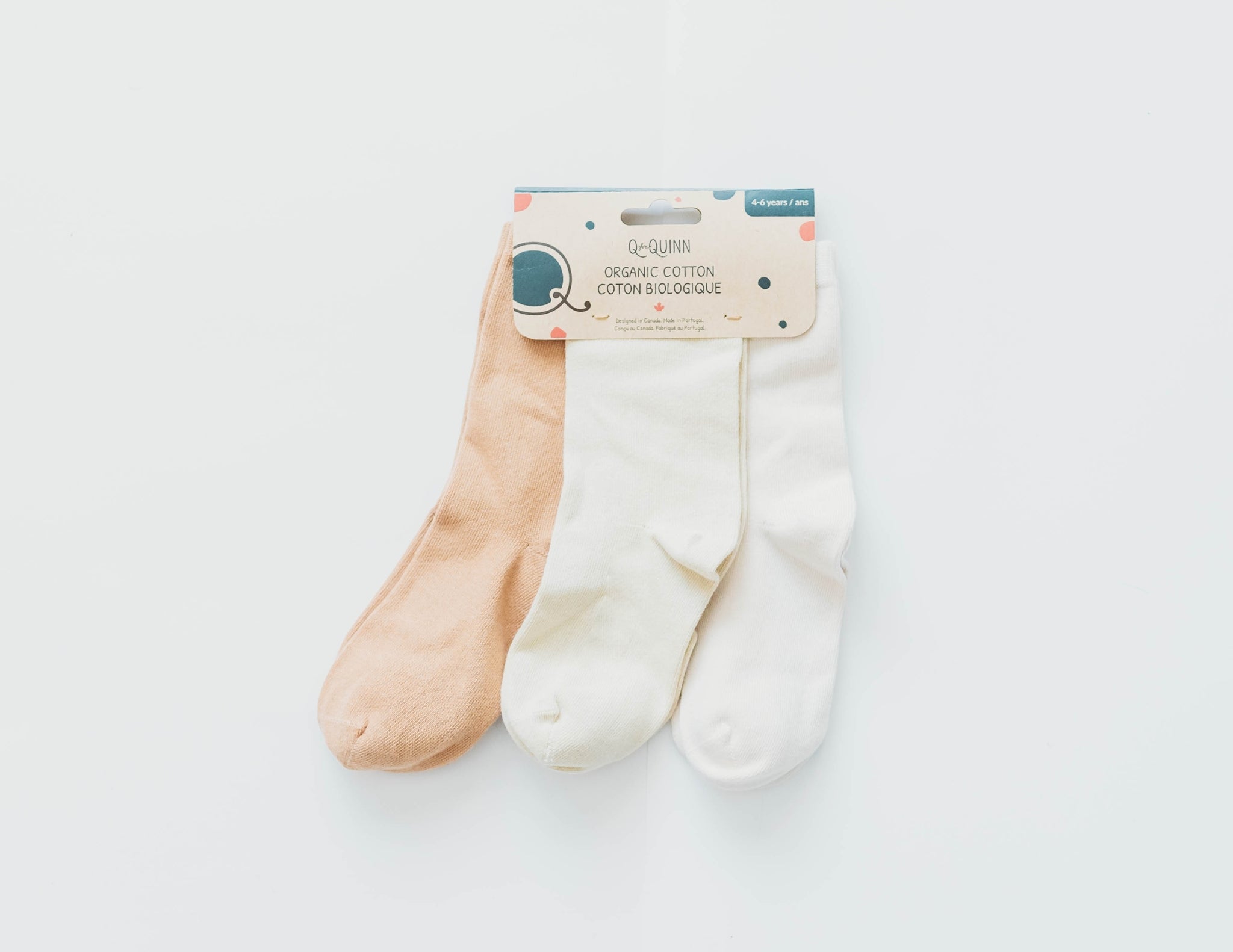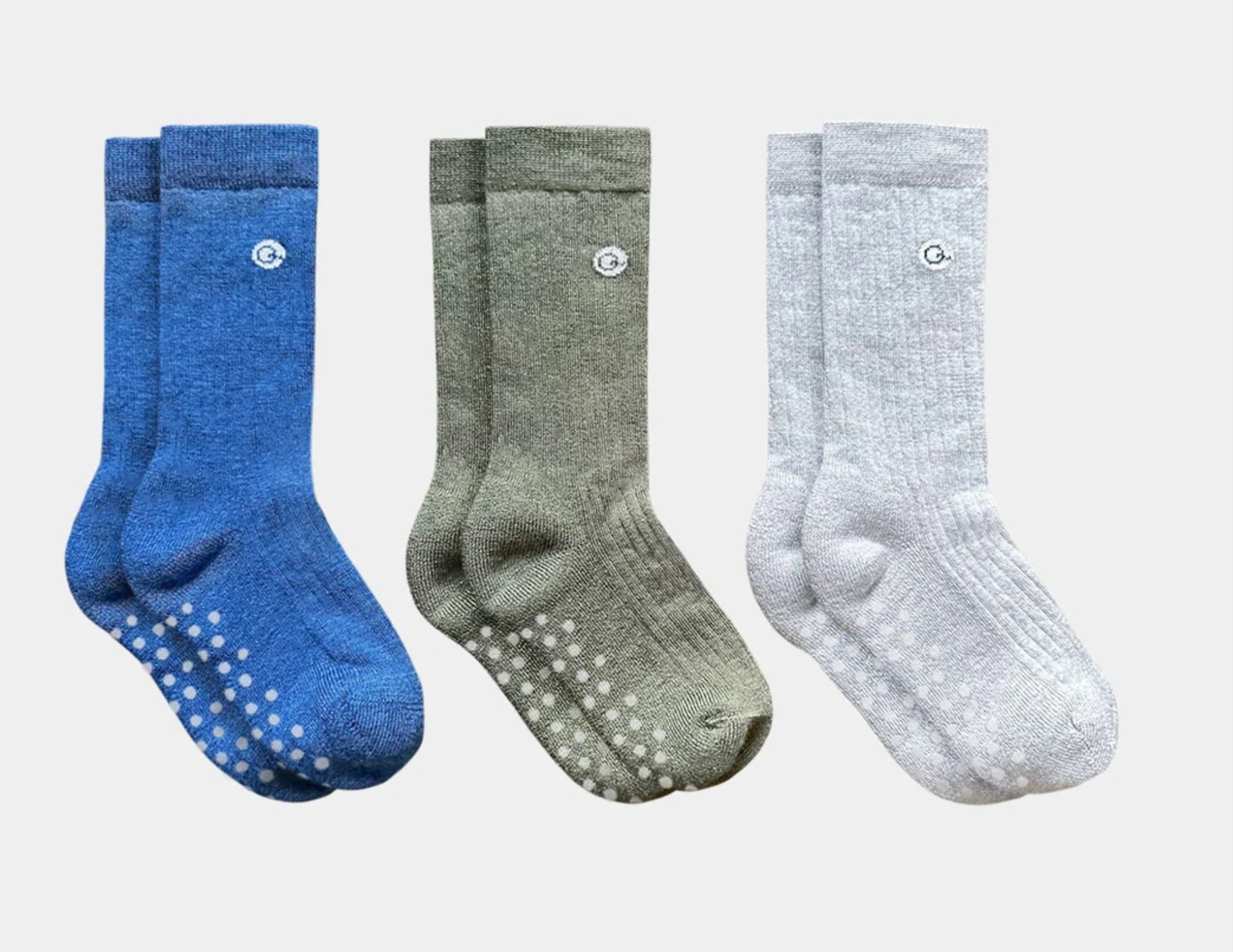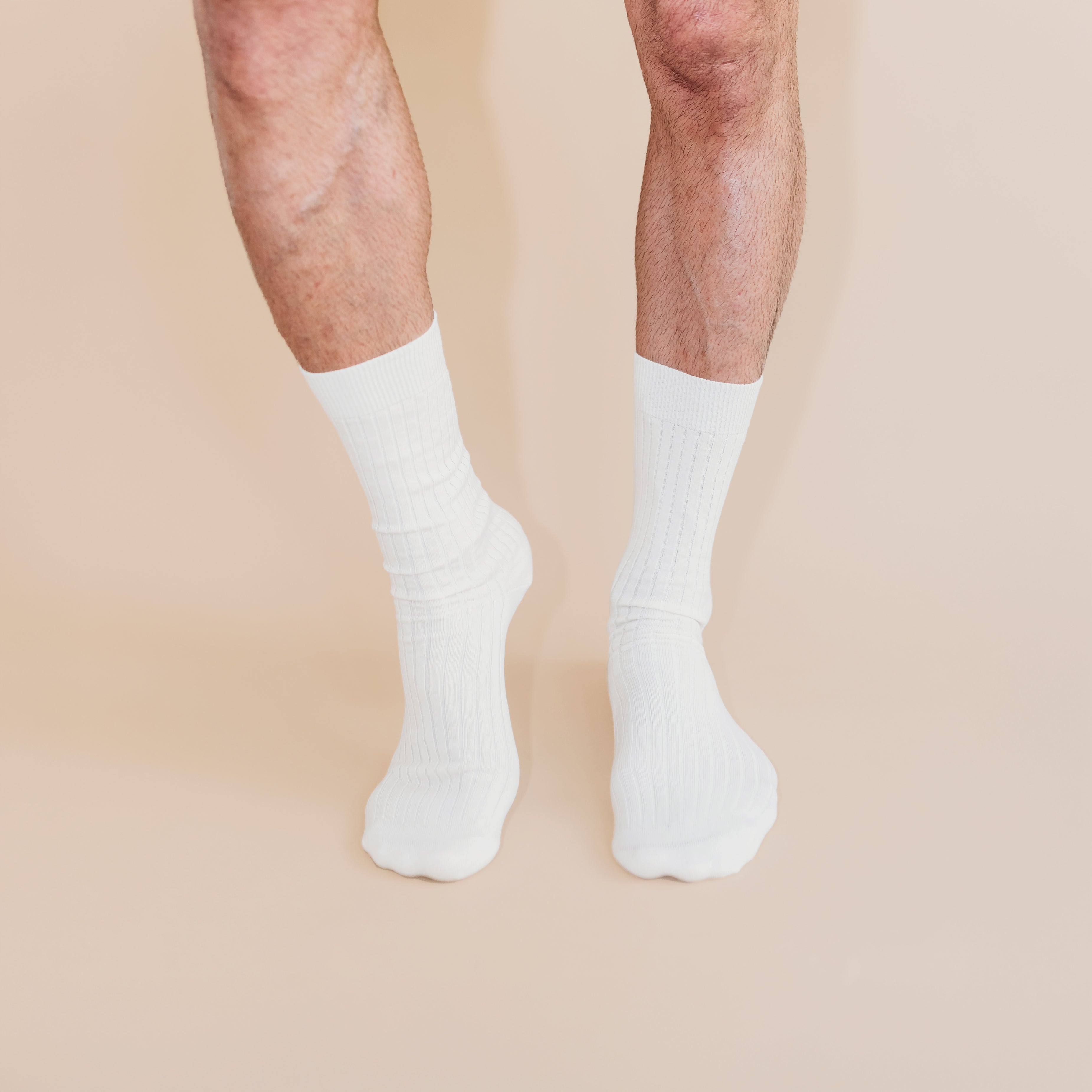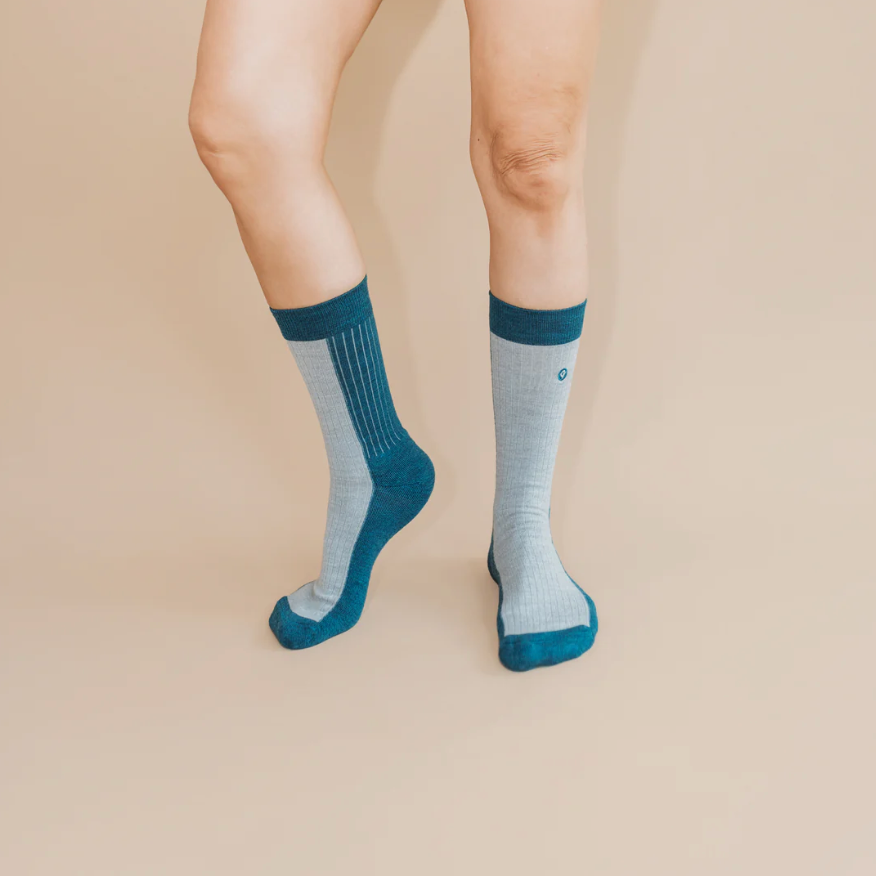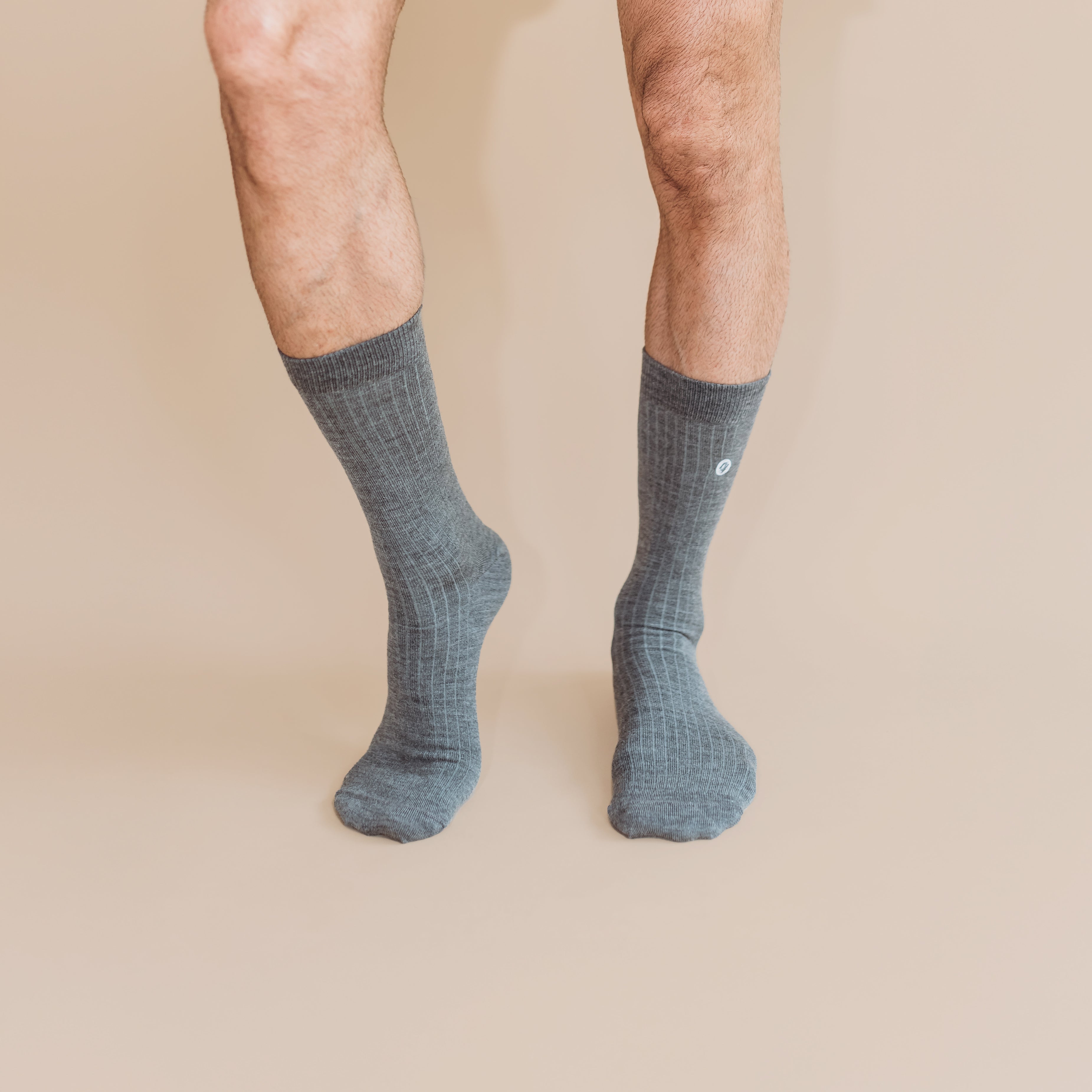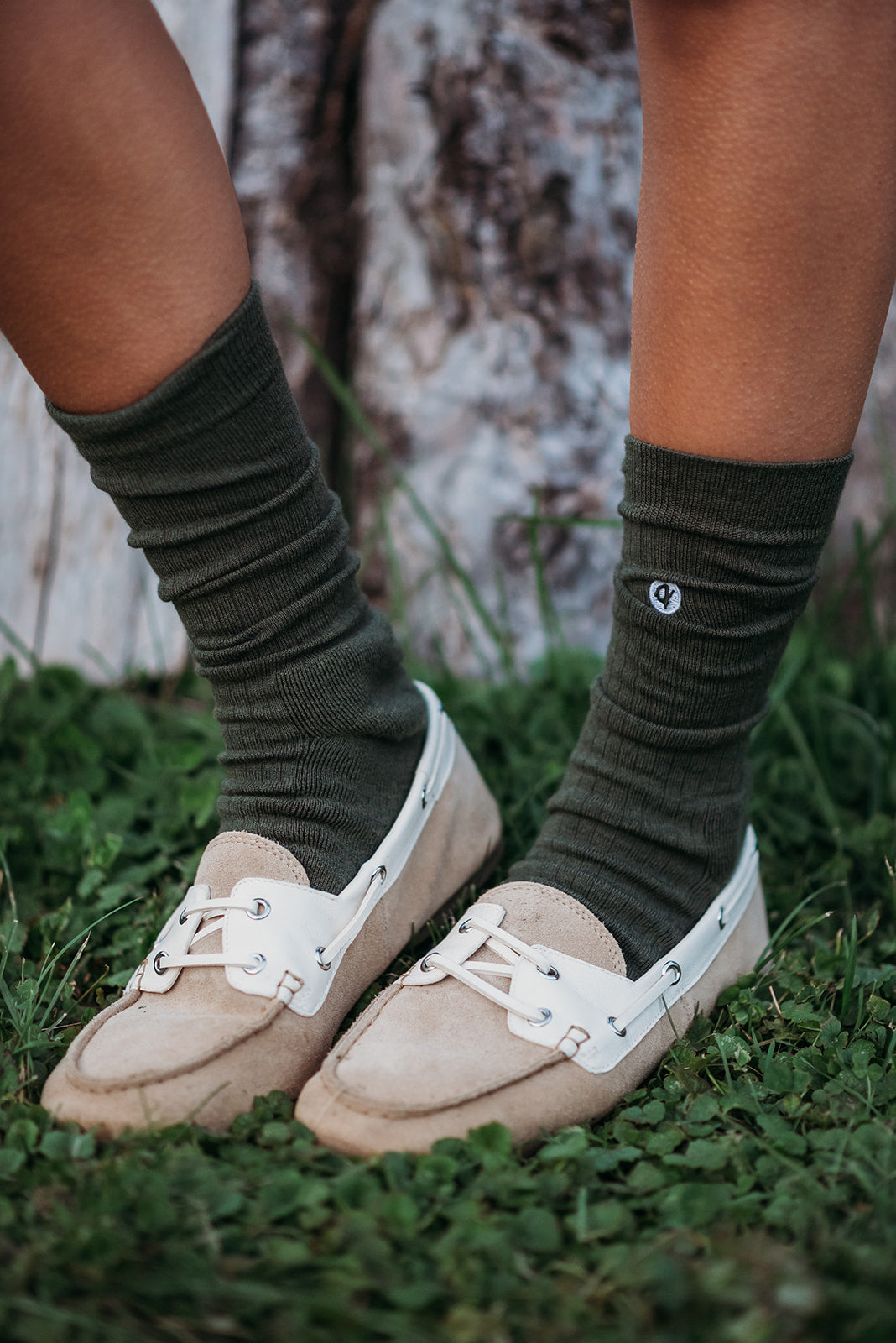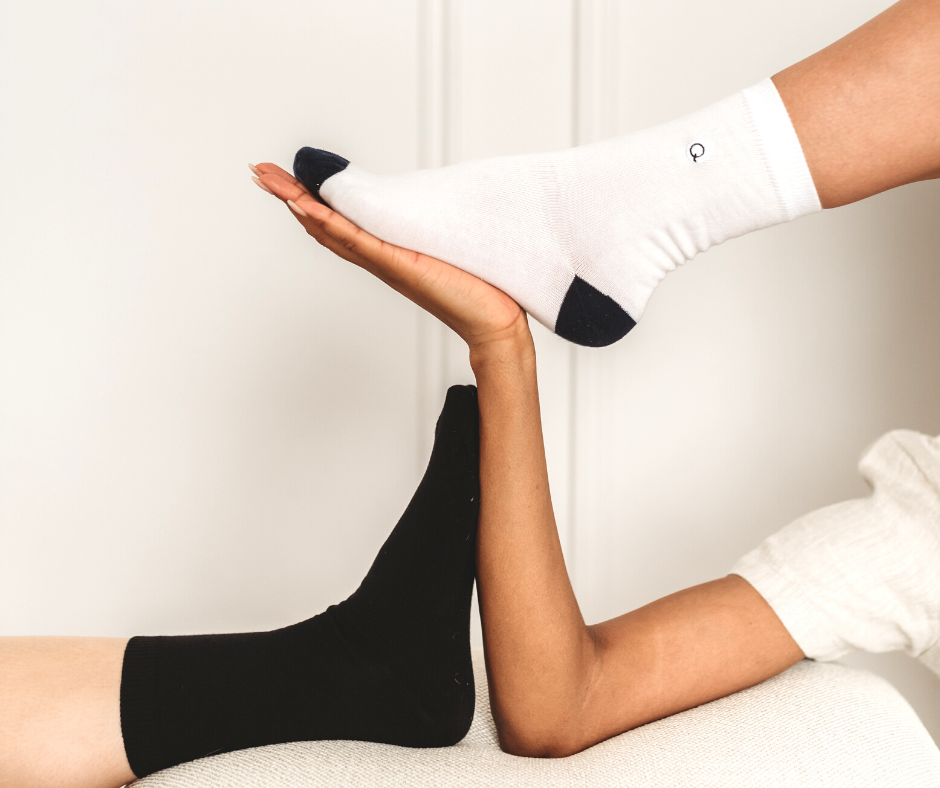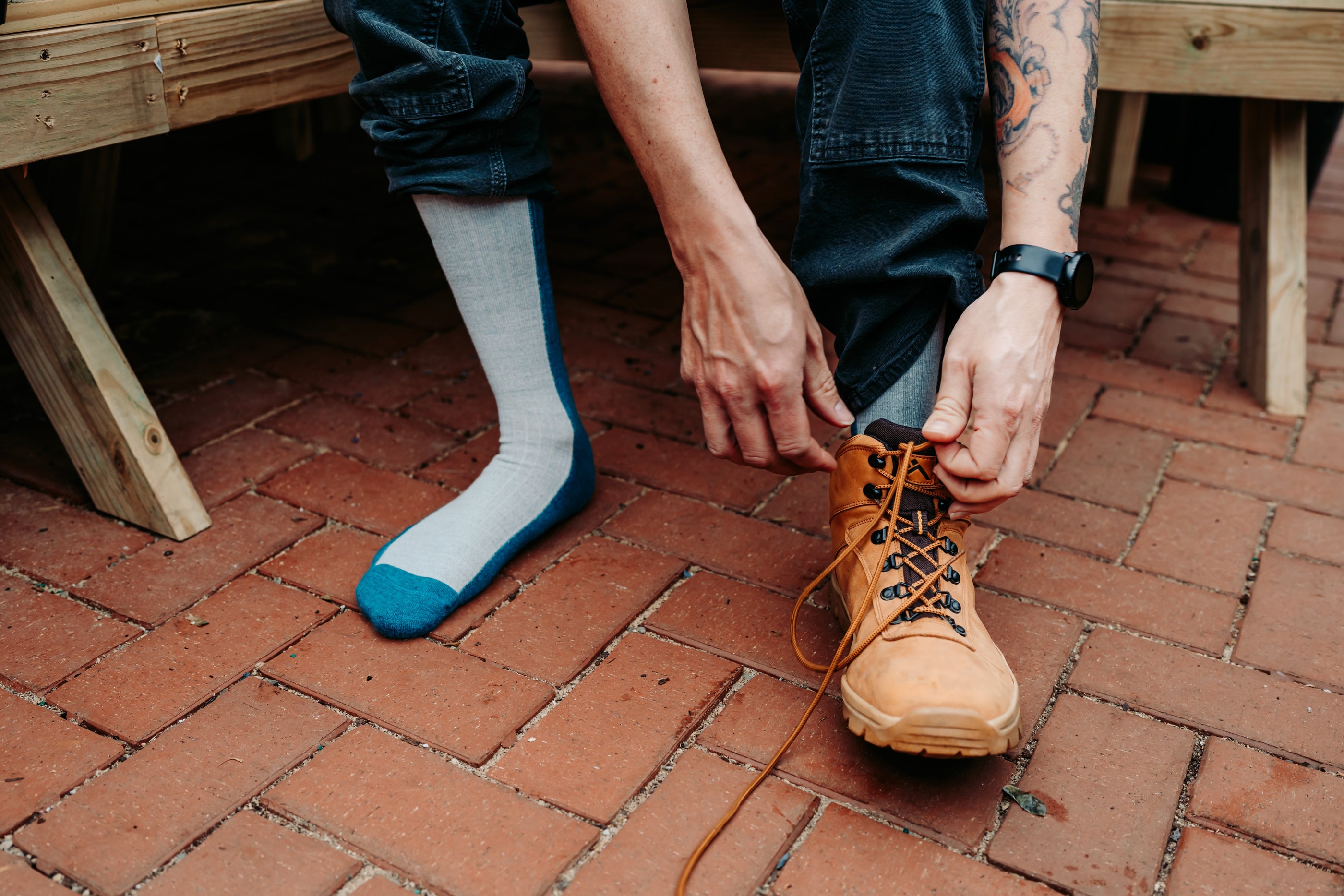
Best Socks for Toenail & Foot Fungus: Antifungal & Moisture-Wicking
Foot fungus is more common than many people think. Whether it’s sweaty feet after a long walk or damp socks that don’t dry fast enough, the right environment can lead to unwanted skin and nail problems. The materials your socks are made from can either support foot hygiene or make things worse.
In this article, we’ll explain what causes toenail and foot fungus, what to look for in antifungal socks, which fabrics help most, and how Q for Quinn’s natural socks support foot health—all in clear, science-based terms.
What Causes Toenail and Foot Fungus?
Toenail fungus (onychomycosis) is a common infection where fungi invade the nail, often causing it to become thick, discolored, or brittle. Athlete’s foot is a related fungal infection of the skin on the feet, leading to itching, peeling, or red, scaly skin between the toes. These fungi thrive on moisture and warmth. Sweaty feet inside shoes create an ideal environment for their growth. In fact, around 15–25% of people have athlete’s foot at any given time. Being active outdoors often means sweaty socks and boots, which is exactly the warm, damp setting fungi need. Up to 70% of people will get athlete’s foot in their lifetime if they frequently expose their feet to these conditions. Choosing socks that wick moisture (especially woolen fibers) can help keep feet dry and reduce fungal growth.
Risk Factors and How Infections Spread
Warm, damp conditions increase the risk of foot fungus. Busy feet like those of athletes or hikers sweat more, fueling fungal growth. Tight shoes or non-breathable footwear can trap heat and moisture. Contact with contaminated floors or mats also spreads fungus. Dermatologists advise wearing sandals or flip-flops in communal showers or locker rooms. Barefoot contact with fungal spores is risky. Socks are an extra barrier between you and the floor, making it harder for the fungus to come in contact with your skin. Avoid walking barefoot in public areas like gym showers or pool decks because fungi can linger on floors. Socks also help: one podiatrist notes that socks make it “harder for the fungus to come in contact with your skin. ”By covering your feet in public places, you greatly reduce exposure to fungal spores. Another fungus risk can be caused by wearing shoes without socks.
Daily Foot Hygiene and Treatment: How to Kill Foot Fungus
For any foot or nail infection, the goal is to kill the fungus with effective treatment. For athlete’s foot (skin fungus), begin with:
- Wash and thoroughly dry your feet at least twice a day.
- Apply an over-the-counter antifungal cream or spray (for example, terbinafine or clotrimazole) to the affected skin as directed.
- Soak your feet in a diluted vinegar solution (about one part vinegar to two parts water) for 10–15 minutes daily, then dry them completely. Vinegar’s acidity can help slow fungal growth.
- Change into clean, dry socks after bathing or exercise; use breathable cotton or wool socks to keep feet dry.
For toenail fungus (onychomycosis), treatment is more prolonged:
- Use prescription medicated nail lacquer (ciclopirox) or cream on and under the nail daily.
- A doctor may prescribe oral antifungal pills (such as terbinafine or itraconazole) for 1–3 months to attack the infection from within.
- In some cases, the podiatrist may thin or drill the nail so medication can penetrate deeper.
- If the infection is very severe, a physician might remove the nail (temporarily or permanently) to fully clear the fungus.
Even after treatment, nails grow slowly, and the infection can return, so continue preventive steps to protect your feet. For more expert insights on feet health, sock care, materials, and styles, explore these helpful guides:
Choosing the Right Socks and Shoes to Prevent Fungus
The socks and shoes you wear are key to preventing fungus. The best socks for nail or foot fungus are those that keep feet dry and cool. Look for moisture-wicking socks with breathable fabrics. The best socks for toenail fungus” allow the feet to stay dry, avoid moisture buildup, and stop fungal spores. Natural fibers like cotton and wool help remove sweat and allow airflow. Cotton can absorb moisture but holds onto it longer, whereas wool can absorb sweat yet still feel dry on the skin. This is why Merino wool socks are considered to be the best anti sweat socks. Socks with antimicrobial or antifungal agents (such as copper or silver) offer extra protection by killing fungi on contact.
Materials That Help Prevent Fungus
The choice of sock material is one of the most important factors in preventing toenail and foot fungus. Fungi thrive in warm, moist environments. Choosing socks that reduce sweat and improve airflow can lower the risk of infection. Antifungal socks are designed to keep feet dry and sometimes include ingredients like copper or silver that reduce fungus on contact.
Organic Cotton
Organic cotton is grown without the use of synthetic pesticides or chemical fertilizers. There is a huge difference between organic cotton and regular cotton. Organic cotton is a much safer choice for people with sensitive skin or those trying to avoid exposure to skin irritants. The fiber is soft, breathable, and hypoallergenic, making it suitable for prolonged wear. This is why socks for sensitive skin mostly is made of organic cotton.
Cotton is known for its ability to absorb moisture. While this can help keep sweat away from the skin, cotton retains that moisture and can become damp over time. For this reason, it’s important to change into a fresh pair of organic cotton socks once they become wet or after physical activity. This reduces the risk of fungi finding a damp place to grow.
Merino Wool
Merino wool is known for its advanced moisture control and temperature regulation. It can absorb up to 30% of its weight in moisture without feeling wet. This unique property helps keep the foot dry even during sweating or exposure to humidity.
Lanolin, a natural wax found in merino wool, has mild antibacterial and antifungal properties. It helps reduce odor-causing bacteria and may also make the surface of the fiber less friendly to fungal spores. Merino wool is also naturally breathable, insulating in cold weather while allowing excess heat to escape in warmer conditions. This dual functionality makes it an excellent choice for preventing foot fungus year-round.
Bamboo and Blends
Bamboo fiber is often praised for its softness and moisture-wicking ability. It draws moisture away from the skin to the surface of the fabric, where it can evaporate more easily. Bamboo is also naturally breathable and may have mild antibacterial properties due to a compound known as "bamboo kun," though the strength of this effect depends on the processing method.
Blends of bamboo with other natural fibers like cotton or wool are often used to create comfortable, moisture-managing socks for daily use. These materials can provide a useful alternative for individuals looking for plant-based, breathable options that help maintain dry conditions for their feet.
What to Avoid in Socks
Choosing the best sock material involves knowing what to avoid, especially if you’re trying to prevent or manage fungal infections. Certain materials and designs may increase foot moisture or cause friction—both of which contribute to fungal growth.
Synthetic Fibers
Socks made from synthetic fibers like polyester, acrylic, or nylon may trap heat and moisture against the skin. While some performance synthetics claim to wick moisture, many lower-quality versions don’t offer enough breathability or moisture dispersion. Prolonged exposure to these materials can leave feet damp, making it easier for fungus to thrive.
Synthetic fibers also tend to hold odor and may cause skin irritation for people with allergies or eczema. For long-term foot health, especially in warm climates or during physical activity, natural or blended alternatives are often a better choice.
Tight Elastic Bands
Tight sock cuffs or elastic bands that dig into the skin can restrict blood flow and cause pressure points. This not only leads to discomfort but may also irritate the skin or cause small abrasions—potential entry points for fungi and bacteria. This is especially important for individuals who already have nail issues or inflamed skin from an athlete’s foot.
Look for socks with gentle, non-binding cuffs or seamless construction to reduce friction and pressure. This will help protect the skin barrier and reduce the chances of irritation that can make fungal infections more likely.
Key Features of Antifungal Socks
- Moisture-wicking socks: Socks should wick sweat away from the skin
- Breathability: Good air flow (through mesh panels or natural fibers) helps feet stay cool
- Antimicrobial fibers: Some socks contain copper, silver, or other agents (often labeled “antifungal socks”). These ingredients inhibit or kill fungus on contact.
- Natural materials: 100% organic cotton socks and merino wool socks are breathable. Merino, in particular, naturally resists bacteria and fungi and wicks moisture due to its lanolin.
- Proper fit and comfort: A well-fitting sock reduces friction and irritation where fungus could enter.
Q for Quinn’s Organic Cotton and Merino Wool Socks
As an example of supportive sock design, Q for Quinn offers socks made from organic cotton and merino wool. We offer a range of organic and ethically made socks—including 100% organic cotton socks, merino wool socks, moisture-wicking socks, and eczema socks—that are gentle, chemical-free, and suitable for sensitive skin. Our merino wool socks are especially helpful for managing moisture and regulating temperature. In fact, Q for Quinn notes that their Merino wool products “naturally regulate body temperature and keep your feet comfortable.” Merino wool’s natural oils (lanolin) give it antibacterial and antifungal benefits. Together, these fabrics help keep feet dry and reduce the chances for fungus to grow. Our organic cotton and merino blends are “gentle on our skin and our planet.”





